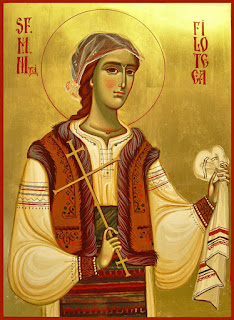Icon from here
Click:
Three Holy Hierarchs: Synaxis of the Ecumenical Teachers and Hierarchs Basil the Great, Gregory the Theologian, and John Chrysostom (January 30)
Orthodox Church & Capitalism: Orthodox Fathers of Church on poverty, wealth and social justice
Maaskofu Orthodox watakatifu watatu: Basili Mkuu, Yohane Krisostomo na Gregori wa Nazianzo (Swahili)
 The Life and Legacy of Blessed Father Cosmas of Grigoriou (†January 27)
The Life and Legacy of Blessed Father Cosmas of Grigoriou (†January 27)LIVE, BEYOND THE LIMITS!
«African needs to be helped, to find his divine roots, for his soul to be at peace, to become united with God...»
 Icon from here
Icon from here



















